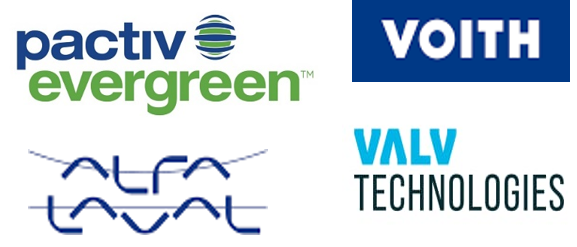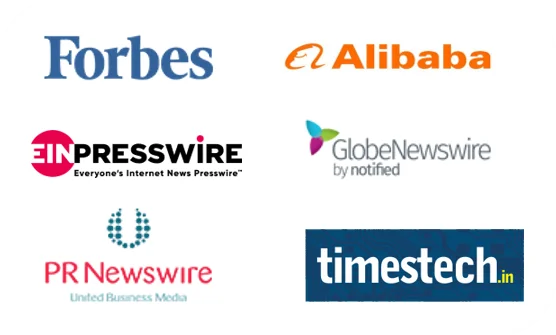Market Overview:
"The global ballast water treatment systems market was valued at US$ 7.8 billion in 2024 and is expected to register a CAGR of 8.1% over the forecast period and reach US$ 15.7 billion in 2033."
|
Report Attributes |
Details |
|
Base Year |
2024 |
|
Forecast Years |
2025-2033 |
|
Historical Years |
2021-2024 |
|
Ballast Water Treatment Systems Market Growth Rate (2025-2033) |
8.1% |
Ballast water treatment systems play a crucial role in preventing the spread of invasive aquatic species by purifying ballast water taken onboard ships. This is vital to protect marine ecosystems and maintain biodiversity. The systems are used in maritime vessels, enabling compliance with international regulations such as the International Maritime Organization’s (IMO) Ballast Water Management Convention. Growing environmental concern, stricter regulations, and awareness about marine conservation are creating high demand for these systems. Efficiency of these systems in reducing ecological risks and preference for sustainable shipping solutions further boost product adoption and drive market revenue growth.
The global ballast water treatment systems market is registering steady revenue growth due to rising maritime trade, stringent environmental regulations, and high focus on ecological sustainability. Revenue growth of the market is expected to be driven by increased adoption of ballast water treatment solutions to adhere to international regulations, expansion of the shipping industry, advancements in treatment technologies, and efforts toward achieving cleaner oceans.
Ballast Water Treatment Systems Market Trends and Drivers:
Stringent Environmental Regulations: Regulations set by organizations such as IMO and United States Coast Guard (USCG) to prevent the spread of invasive species through ballast water discharge is creating high demand for treatment systems, thereby driving market revenue growth.
Sustainability Emphasis: Increasing awareness and adoption of environmentally friendly practices in the maritime industry drive demand for ballast water treatment systems and market revenue growth.
Technological Advancements: Continuous development by major companies in treatment methods, such as Ultraviolet (UV)-based and electrolytic systems, enhances the efficiency and effectiveness of these systems.
Partnerships and Collaborations: Collaborative efforts between manufacturers and shipping companies facilitate technology adoption and implementation of ballast water treatment systems, further supporting revenue growth of the global ballast water treatment systems `market.
Growing Maritime Trade: Growing maritime trade and fleet size contribute to rising demand for ballast water treatment systems, ensuring a positive impact on market revenue growth.
Ballast Water Treatment Systems Market Restraining Factors:
High Implementation Costs: Installation and maintenance costs of ballast water treatment systems are often significant, posing a financial burden on shipowners and operators, and this in turn, could hamper market revenue growth.
Technical Challenges: Variability in water quality, different species, and varying ship designs can lead to technical challenges in achieving consistent and effective treatment.
Retrofitting Challenges: Retrofitting existing vessels with treatment systems can be complex and require significant downtime, impacting vessel operations.
Operational Constraints: Some treatment methods can affect operational efficiency of the ships, leading to concerns about the overall performance of vessels. This can lead to low adoption of ballast water treatment systems, restraining market revenue growth.
Uncertain Regulatory Landscape: Changing and evolving regulations can lead to uncertainty for shipowners and operators, making decisions about technology investments challenging for established as well as new players.
Ballast Water Treatment Systems Market Opportunities:
Rising Regulatory Compliance: Stringent regulations for ballast water treatment is creating possibilities for compliant systems, offering opportunities for manufacturers.
Technological Advancements: Ongoing research and development efforts are leading to more efficient and cost-effective treatment technologies, attracting investments and market expansion opportunities for global players.
Retrofitting Demand: As existing vessels need to comply with regulations, there is a demand for retrofitting services, providing revenue streams for retrofit solution providers.
Growing Shipping Industry: Expansion of the global shipping industry, especially in developing countries, is creating continuous demand for ballast water treatment systems, especially in regions with strong maritime trade.
Partnerships and Collaborations: Manufacturers can form partnerships with shipyards, maritime companies, and regulatory bodies to jointly develop and promote compliant solutions, driving revenue and market penetration possibilities for companies in the global market.
Ballast Water Treatment Systems Market Segmentation:
By Type:
- Chemical Treatment Systems
- Physical Disinfection Systems
- Mechanical Systems
By Technology:
- Ultraviolet (UV) Treatment
- Electro-Chlorination
- Advanced Oxidation
- Filtration
By Capacity:
- Less than 1500 m3/h
- 1500 m3/h - 5000 m3/h
- More than 5000 m3/h
By Vessel Type:
- Container Ships
- Bulk Carriers
- Tankers
- Ro-Ro Ships
- Others
By Application:
- Retrofit
- New-build
By End-Use:
- Shipping Companies
- Offshore Rigs
- Military Vessels
Ballast Water Treatment Systems Market, By Region:
North America:
- United States
- Canada
Asia Pacific:
- China
- India
- Japan
- Australia & New Zealand
- Association of Southeast Asian Nations (ASEAN)
- Rest of Asia Pacific
Europe:
- Germany
- The U.K.
- France
- Spain
- Italy
- Russia
- Poland
- BENELUX (Belgium, the Netherlands, Luxembourg)
- NORDIC (Norway, Sweden, Finland, Denmark)
- Rest of Europe
Latin America:
- Brazil
- Mexico
- Argentina
- Rest of Latin America
The Middle East & Africa:
- Saudi Arabia
- United Arab Emirates
- South Africa
- Egypt
- Israel
- Rest of MEA (Middle East & Africa)
The United States holds largest market share in North America market due to presence robust maritime industry and strict environmental regulations in the country. In addition, significant coastal and inland waterways traffic necessitate implementation of effective ballast water treatment to prevent ecological harm, which is driving revenue growth of the market in this region. Regulatory compliance and focus on sustainable maritime practices drive demand for advanced treatment systems.
In Europe, stringent regulations such as the Ballast Water Management Convention is driving adoption of treatment systems. Green technologies and eco-friendly solutions are gaining importance, while collaborations between manufacturers and maritime organizations enhance system efficacy and compliance.
China and India along with other countries are key contributors to Asia Pacific ballast water treatment systems market due to growing maritime sector. In addition, regulations by The International Maritime Organization and rising environmental awareness in these countries are driving demand for systems that ensure compliance, creating investment opportunities for global players.
Countries such as Brazil and Mexico are expected to be key revenue contributors to Latin America ballast water treatment systems market due to rising maritime activities and increasing environmental concerns. In addition, compliance with regulations and high focus on preserving marine ecosystems are driving demand for effective treatment solutions and support revenue growth of the market in this region.
The Middle East & Africa region is registering increasing adoption of ballast water treatment systems due to rising maritime traffic, environmental regulations, and commitment of government and companies to sustainable shipping practices. Countries such as Saudi Arabia and South Africa are investing in advanced treatment technologies to ensure compliance and safeguard marine ecosystems.
Leading Companies in Ballast Water Treatment Systems Market & Competitive Landscape:
The global ballast water treatment systems market features a dynamic competitive landscape with a multitude of players striving to establish their foothold. Established companies, such as Alfa Laval, Wärtsilä, and Evoqua Water Technologies, leverage their technological expertise and vast industry experience to maintain leadership positions. The market also features emerging innovators such as BIO-UV Group and Trojan Marinex, introducing advanced, eco-friendly solutions. Strategic partnerships, mergers, acquisitions, and collaborations among key players aim to enhance their product portfolios and expand their geographical reach. The competitive landscape underscores a commitment to research and development, ensuring continuous technological advancements to meet stringent international regulations and demands.
Company List:
- Alfa Laval
- Wärtsilä
- Evoqua Water Technologies
- BIO-UV Group
- Trojan Marinex
- Optimarin
- Panasia
- Hyde Marine
- De Nora Water Technologies
- Xylem Inc.
- Calgon Carbon Corporation
- Headway Technology Co. Ltd.
- MMC Green Technology
- Veolia
- OceanSaver
Research Scope
|
Report Metric |
Report Details |
|
Ballast Water Treatment Systems Market size available for the years |
2021-2033 |
|
Base Year |
2024 |
|
Forecast Period |
2025-2033 |
|
Compound Annual Growth Rate (CAGR) |
8.1% |
|
Segment covered |
By Type, Technology, Capacity, Vessel Type, Application, End-Use, and Region |
|
Regions Covered |
North America: The U.S. & Canada Europe: Germany, The U.K., France, Spain, Italy, Russia, Poland, BENELUX, NORDIC, & Rest of Europe Asia Pacific: China, India, Japan, Australia & New Zealand, ASEAN, & Rest of Asia Pacific Latin America: Brazil, Mexico, Argentina, & Rest of Latin America The Middle East & Africa: Saudi Arabia, United Arab Emirates, South Africa, Egypt, Israel, and Rest of MEA |
|
Fastest Growing Country in Europe |
Germany |
|
Largest Market |
North America |
|
Key Players |
Alfa Laval, Wärtsilä, Evoqua Water Technologies, BIO-UV Group, Trojan Marinex, Optimarin, Panasia, Hyde Marine, De Nora Water Technologies, Xylem Inc., Calgon Carbon Corporation, Headway Technology Co. Ltd., MMC Green Technology, Veolia, OceanSaver, and among others. |
Frequently Asked Question
What are the key factors driving revenue growth of the global ballast water treatment systems market?
The key factors driving revenue growth of the global ballast water treatment systems market include stringent regulations to prevent the spread of aquatic invasive species, rising concerns about environmental pollution, growth in maritime trade, increased awareness of ecological impacts, and advancements in technology to develop more efficient and eco-friendly treatment systems.
Which regions/countries register significantly high demand in the global ballast water treatment systems market?
Regions and countries with high demand for the systems in the global ballast water treatment systems market include North America (especially the United States and Canada), Europe (Germany, France, etc.), Asia Pacific (China, Japan, South Korea), and the Middle East & Africa (Saudi Arabia, South Africa) due to their active maritime trade routes and stringent regulations.
What are the key challenges faced by companies in the global ballast water treatment systems market?
Companies in the global ballast water treatment systems market face challenges such as high installation and operational costs, varying regulatory requirements across regions, compatibility issues with different vessel types, technical complexities, the need for continuous monitoring and maintenance, and selecting the right treatment technology for different water conditions.
What are the emerging trends observed in the global ballast water treatment systems market?
Emerging trends observed in the global ballast water treatment systems market include development of advanced technologies such as UV treatment and electrolytic disinfection, increasing focus on eco-friendly and chemical-free treatment solutions, growth in partnerships and collaborations to enhance R&D efforts, and integration of digitalization and automation to streamline treatment processes.
How are government initiatives supporting revenue growth of the global ballast water treatment systems market?
Government initiatives are supporting revenue growth by enforcing stricter regulations, such as the IMO's Ballast Water Management Convention, which mandates the adoption of treatment systems on vessels. Various countries are aligning their regulations with these international standards, incentivizing shipowners to invest in compliant treatment systems, thereby boosting demand and driving revenue growth of the global ballast water treatment systems market.

